Inverted Icy flight – The South Pole!
The Katabatic winds were still blowing from time to time.
The aircraft was safe, thanks to a huge tractor that was positioned as a protective wall for the aircraft. Also, I had the ailerons and rudder blocked, the last one using an old model aircraft system.. Not attractive but efficient.
Most of the day was spent studying the incoming meteorology. Antarctica, it is said not to be fully predictable, but still, it was the way to go.
Two conditions limited the departure: winds and icing.
Finding my way along some 4600 kms avoiding icing is really close to a miracle, but I did know that those miracles do happen from time to time. Having studied Antarctica weather since two years before, allowed me to think that those miracles exit.
Some people call them weather windows.
Winds…
Winds…
After thinking a lot about skies, and considering the pro and cons (mainly the expected lack of support from USA, British and ALE (Antarctic Logistics Expeditions) , the decision was taken. The skies should be removed !
With them installed, I would not have the range to reach Marambio. The flight from Hobart into Mario Zucchelli (MZS) made it clear.
The fact is that just two skiways were available: the one at the South Pole and the one at Fossil Bluf (quite close to Rothera).
South Pole was a No-Go landing place. US made it clear !
Would I land there, the aircraft would have the wings removed and the whole thing sent via Air to somewhere. Minimum some $200000 fee.
Flying on wheels, I could land at Mc Murdo (with the same South Pole stimulating inputs), Union Glacier (where ALE decided not to provide me fuel, even paying everything), SkyBlu and Rothera (both served by British Antarctic Survey- BAS).
BAS stated that they were very busy, and were not supporting flights with one single pilot. They would however change those rules but that would be for next year. The funny part of the story is that BAS fly their aircrafts (Twin Otter) on a single pilot basis !
However, both BAS and ALE, would receive me if I was in an emergency situation, and ALE would do it on a ¨Humanitarian basis¨ ( but of course paying them incredible amounts of thousands of dollars for their Humanitarian support).
So the strategy was clear: I had to wait for a day that allows me to reach Marambio safely.
The flight was to last around 19-20 hours, no wind. Reserves would be around four hours.
But you know, theory is theory, so I decided to go for conservative numbers and use finally a no-wind speed of 120 kts, that would have the flight going to 21 hrs. Fuel reserve was still good.
MZS was so at sea level that actually, the aircraft was parked on the sea. Fortunately the sea was frozen.
Jim, from ALE (flying a beautiful Basle from MZS) provided me a good advice: turn your altimeters knobs full counterclockwise, set them at the minimum pressure possible.
Cold is good for aircraft performances, but low pressures are not. Also you know that the pressure layers do go lower when it is very cold, so, when flying extreme cold weather, you are actually much lower than expected.
The good news is that GPS provide altitude. Not a good one, but much better than nothing.
But GPS is based on an Ellipsoid. There are altitudes differences between the Ellipsoid, the Geoid, and the actual Earth surface, so at Antarctica, the GPS altitude readings are not so good.
All that to say that the aircraft performance would be decreased instead of improved.
South Pole is really high, some 2835 m. It is at the Antarctic Plateau, that averages 3000 m, with a diameter of 1000 kms. It is very cold up there, and many times quite windy.
So, low temperatures, low pressures, high elevation, would have my dear RV8 able to get up there if I really want to fly there.
Transantarctic mountains is a range that follows more or less the meridian into the South Pole, from MZS.
I had two choices: going up direct from MZS or flying lower, over Mc Murdo, getting rid of the Plateau winds (headwinds) and climbing without rush into the Pole.
Again Jim told me that a good glacier to fly was Beardmore Glacier. Again a good advice ( thank you, Jim).
The RV8 was going to be at its maximum take off weight, and the low fuel flows would take forever to have the aircraft weight at high altitude capability (for me some 12000 ft).
The decision was clear: I would fly the Mc Murdo-Beardmore glacier way !
It was around November the 5th, that Windytv showed some weather window chance for the 8 and 9th.
The 9th was a better day than 8th, but after 9th, weather was going to become bad and no windows would be available for a long time.
Would I land the 9th at Union Glacier, I would not be able to depart in some long time, if finally they provided fuel.
Not easy to decide, but finally, the predictions confirmed those windows and I decided for the safe one: the 9th was going to be the D day.
Many of the decisions are made on experience, and also on a kind of faith. Something inside, may be a Guardian Angel.
Christian, the MZS weather man, teached me about how to use one of the antarctica weather software (www2.mmm.ucar.edu/rt/amps/), so I used finally both windytv and that one.
Average fuel flow was based on a conservative 34 liters/hr, that would ensure some 22 hours endurance.
The graphs was to be plotted, and the check points also. Would I go lower on fuel, I would have to proceed to an alternate.
November the 8th, I was able to say good bye to most of the nice people I met at MZS. Everything was prepared for the next day: aircraft engine pre-heating, topping the tanks, sandwiches and coffee (thank you very much, MZS kitchen!) and everything I could need was provided.
The support to this scientific project by Italy is something that Spain would forever to thank and not to forget. They really have the true humanty, scientific and Antarctica in their blood.
Shower, breakfast and a strange feeling in my inside: how that flight would end?
How was the aircraft to perform at take off?
Would it be ready to climb at the right time ( it should be according to my calculation) ?
How was the actual weather to be?
Emails were sent to everybody: USA, BAS and ALE.
BAS reminded me that the actual Rothera landing was not granted, but would I need to land there, I would receive full support, although no Avgas was available ( not an issue, because they had Mogas).
Antarctica flight is under a document ICAO based, called AFIM.
Some countries are responsible for tracking the flights and if a contact is lost for more than one hour, an alert is sent.
I do understand that follow-on nodes are the ones at the main landing places, so MZS at the beginning, Mc Murdo following, Admunsen-Scott at the South Pole, ALE at Union Glacier, and Rothera , Marambio and Eduardo Frei at Antarctica peninsula.
That is the reason of those emails destinations.
I had ordered Avgas at New Zealand, some 600 liters, with Isopropyl Alcohol. Those drums were coming the 7th on board of a NZ C130 aircraft, serving the Italian Antarctic program.
Finally it was arriving later, so the mogas fuel loaded long before on my aircraft was going to be the actual fuel.
Mogas was 95 octanes, Avgas 100-130 octanes. So Mogas was even more interesting than Avgas because it was much more ¨explosive¨. More heat was better for me.
I had the engine air intakes reduced by 1/3, for the expected very cold temperatures.
The new HF antenna was installed, I was ready to fly.
Engine started fine. I went into all the preflight checks and taxied to the shorted MZS runway, that was in better condition than the C130 longer runway.
Flaps one, full power, and holiday on ice !
Some 45 seconds later, the aircraft was approaching the runway end but was no so ready to lift off.
I had to tell her ¨go !¨
She hesitated a little bit, but finally she was kind and decided to fly.
She accelerated through 80 kts, and I released her from the flaps.
I turned right, then left for a turn into the MZS station.
I wanted to thanks them with a low pass and kind good bye.
I flew close to the rocks and suddenly, the blue station appeared. Some people were waving their arms and I did so.
Then, I disappeared from their horizon.
Soon I was overwater, at low altitude.
Predicted winds were low intensity ones, with no headwind effect.
But NO !
Strong winds were blowing and producing huge rotors that could crash me on the sea.
What a bad start !
I turned into open sea to escape those dangerous downdrafts, and that was a very good decision.
Just below, and very close, the surface of the sea was plenty of whirlwinds . Nothing similar to the rough sea winds. I was really critical moment !
That very local phenomena was soon overcome, and I was flying again over sea ice, were I could land and survive.
Winds were blowing fast and not friendly. Ground speed were far below those 120 kts I have desired.
Michel, I told myself, be patient, soon you will reach the predicted tailwinds…
So I did !
I did test the HF, but it didn´t work. Something has happened, the coupler is not working.
So I used the iridium to call MZS and report every hour.
Mount Erebus, the highest Volcano in Antarctica was waiting for me. The air is so pure, so clear there, that it was in my hand reach, but it would take a long tine to actually reach it.
Not the same as Guatemala or Nicaragua volcanos: that one would see me from the above.
Myself, just a small bird more flying its basement.
Mc Murdo, this is EC XLL ?
Murdo, EC XLL?
Frequency change:
Mc Murdo, EC XLL?
Mc Murdo, ELL?
Frequency change:
Mc Murdo, EC XLL?
No answer. However somebody should be there !
Mc Murdo, EC XLL transmitting blind, from Mario Zucchelli destination Marambio, maintaining 4500 ft,
No answer
Sometime later, my iridium phone rang.
EC XLL, this is Mc Murdo. What altitude you are flying?
That voice was colder than the surrounding ice.
The call ended the same way it started. Cold !
The aircraft started to become lighter, the headwinds increasing.
I was almost one hour late at my Beardmore Glacier arrival !
What a huge, huge one. It was like all the ice fron South Pole was going in it into the ocean.
It was right, it was like a highway into the south.
Whenever I could, I tried to have my altitude increased. So did the Glacier.
Scenery was incredible. I was really lucky to be there. But also I was already quite concerned about the flight. The winds were not the predicted by AMPS.
One of the profiles offered by AMPS is the one from Mc Murdo into South Pole and then another from South Pole into Rothera.
No, no, those winds are not the ones I expected. That was not looking nice !
I knew that after the South Pole I would have a mixture of tailwinds, crosswinds and headwinds. Only chance is that the actual tailwinds balance the headwinds to keep that minimum 120 kts average, if I wanted to reach Marambio.
I called Don Pearsall at Sky Polaris HQ, and asked him for help. I needed to land at Union Glacier and refuel with Mogas, to be sure to get into destination because of the unpredicted winds.
I would see about their ¨humanitarian help¨
I had very clear in my mind that safety is the first thing. Also Antarctic Treaty. It is much easier to rescue me at Union Glacier than in the middle of nowhere. Same thing about retrieving the airplane ( because nothing can be left at Antarctica).
Skis were left at MZS. It was agreed that they would be kept there until the aircraft has left Antarctica. The reason was easy: would I land anywhere, and the aircraft survive, I could use the skis to have the airplane flying again and comply with the Treaty, not contaminating the continent.
Union Glacier had bad weather the preceding days. They were unhappy because the snow on the ice blue runway, would delay their tourist activity, a good income for them.
It is difficult to understand how Antartica is so restricted (but for science) and an enterprise makes money there with non science related activities.
Union Glacier is actually a Chilean station. But some agreements between that Slat Lake enterprise and Chile, allows them to have their income there.
Actually, the snow depth was 2 to 3 cms, not a big amount. They use blowers to clean it.
So ALE stated that they had 300 m already cleaned, and would clean the area I would need for me to land. Also that they would provide me shelter and food. But fuel was not an option: they would not provide me any fuel (and they did have mogas).
100 liters would have helped me a lot. I would have landed, refueled and taken off again into Marambio. But it was an absolute NO for the fuel.
I knew later that their asked for advice to USA.
Why they did that?
They are a private enterprise operating at a Chilean station.
Of course, if USA told them that it was ok for me to land there, and provide fuel, they will charge for everything: cleaning the runway, lodging, fuel, weather information and best of all, a kind of SAR insurance with them that would cost even some $350000 as I was told by an Earthrounder some time before. So , may be I am tired now, but I don´t understand clearly their ¨humanitarian¨ idea.
I was soon entering the plateau.
Was I really flying inverted?
That suggested altimeter setting was really a good advice !
Temperature was higher than expected, only -31 C. My improved heater worked nicely and I could feel the warm under my feet. The bottle of water, sitting next to the control stick, didn´t freeze at all. I felt happy with the second heat muff set parallel to the first one. Maths worked right.
As expected, winds were blowing fast ( of course headwinds) and ice crystals were present underneath, reducing the horizontal visibility for those inside that 1000 ft layer up from the ground.
Losing the horizon is one of the worst thing when flying over Antarctica, so better to stay above of that layer. Metar provides horizon information for Amundsen-Scott.
The ice underneath was speeding, so I was close to the ground. No errors were allowed. Never to crash under controlled flight into the ground !
And there it was, the South Pole !
The ice crystal layer was clearing and I was able to see the bottom of our dear Earth.
That bottom was not quite sexy, but…who cares !!!
Same history with that USA station. Not a single call was answered by them, even on emergency frequency.
That produces a bad feeling.
Would I emergency land somewhere, what would happen?
Why Rothera stated that they only track just the their BAS aircrafts?
Why did they have that attitude respective to a Spanish Scientific project, approved and supported by so many Treaty countries like Italy, France, Australia, Argentina, Chile and Russia.
Just USA and British didn´t support it. Why?????
Many iridium calls went on, mainly with Don, Paula, also ALE.
ALE was advised that I would call them 2 hrs before my arrival, would I decide to go there.
The one at the other side of the phone, Dean ( I think is his name) was quite nice. I had the strange feeling that he was uncomfortable with the situation.
Winds improved a lot. Many fuel calculations were made. And finally, Marambio was in reach again.
I also asked Don to contact Rothera.
Before departing, Rothera provided me all their information would I go there ( thank you). They reminded me that once there Dash aircraft has passed the non return point, Rothera wheel runway would be close for everybody. They didn´t want their aircraft landing somewhere else than Rothera. For their aircraft, safety is a must. I did really understand them !!!!
The Iridium rang again. It was Matevz Lenarcic, a good friend, good pilot, earthrounder and many things. Only bad thing is that he is younger than me !
He was to provide me a very good information: he had studied the weather in front of me, and winds were going to be strong tailwinds all the way into Marambio. That was the biggest good news.
The RV was pointing since long into Marambio. I was able to turn anytime into Union Glacier, Skyblu and Rothera.
Skyblu is also a BAS station, ice blue runway. Only four people where there, but it was still a safe place to land.
Other calls went on, and it was clear that even if cleared to emergency land at Rothera, they will not ever to provide me ANYKIND of fuel, so the aircraft would be stranded there and the project halted . It is clear that those kinds of position put a high stress and risk.
The easy thing was to land, refuel and go, but stopping and aircraft for unknown reason, forces to take more risks and complicate everything.
Fortunately the winds were blowing nicely. My 120 kts average was becoming true.
I was tempted to release my belly tank, to have the aircraft flying faster, but I didn´t do it.
Rothera was already left of my track, and soon the sat phone ran again.
It was Rothera.
May you tell us what altitude you are flying? We have and aircraft going into Halley.
I am maintaining 11700 ft. Does your BAS aircraft have TCAS?
Yes , it does.
Ok, so I turn my transponder ON to have your aircraft me in contact, would we cross our paths
TCAS is a system that allows aircraft to see the other ones, using the transponder ( Traffic Avoidance).
I asked then Rothera for weather information at Marambio. I did knew that Marambio weather could be not very good.
I was denied that information !
Soon I was overflying a huge cloud layer. That layer meant icing for me, and Marambio was approaching…
Don told me that weather at Marambio was scattered and broken clouds at destination, but I was not able to find that broken area that would allow me to descend.
Fuel remaining was not looking too nice, but I was happy to be already inside Marambio 200 NM, where my Search and Rescue was provided by Argentinian Air Force. So I tracked into Marsh airfield, where weather was fine.
Anytime, I could turn right into Marambio, would I find that hole in the sky.
My water provisions, some four liters was done. Antarctica is really the driest continent in the world !
Marambio was already in VHF contact.
The kind Controller soon provided me a radial and distance where the sky was open.
I relied on his information and tracked into that position and there it was, the opening !
I dived like a pelican tracking the prey, and soon had a beautiful view of the area.
My main tanks have a capacity of 80 liters, but the gauge indicates only the 50 liters remaining
I wanted to check the 48 or 49 indicating to know exactly how much fuel was remaining in that tank
But the time was running and that indication didn´t change ! Always I had more than 50 liters in it!
It was magic !
I was almost positioned downwind when I told myself that it was a bad thing switching tanks there, but I was no longer confident on that indication !
Marambio is at a top of a hill. Winds were blowing at more than 25 kts and downdrafts were present in final. Not a good thing to have an engine stop there !
So I decided to switch to the left main wing tank.
The third landing was nice, after bouncing, I was safely at Marambio, where I knew that I would be hosted and also fully supported.
The best moment was to push twice the spidertracks button that send a message stating: LANDED !
I was parked in the hangar, and first thing I did was to check the right wing tank: it was empty.
The left one….some 2 hours reserve !!!!








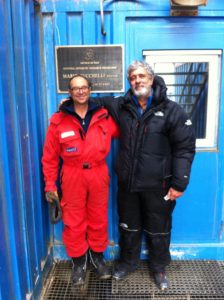
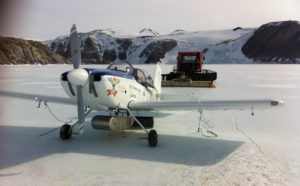
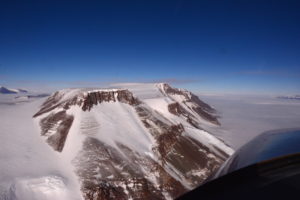

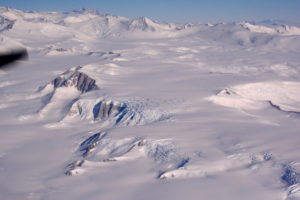
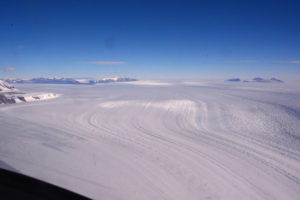
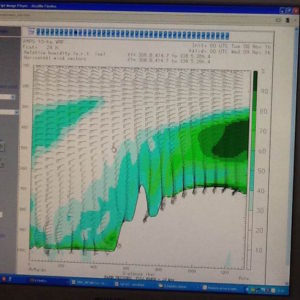
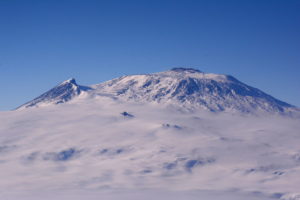
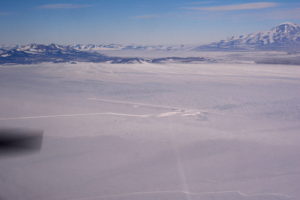
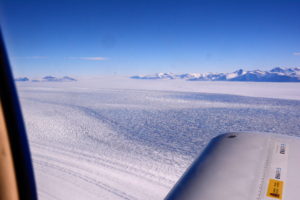
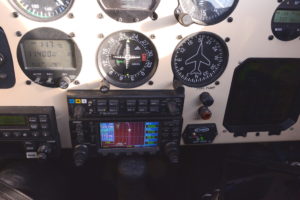

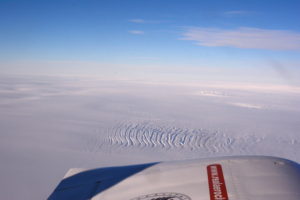
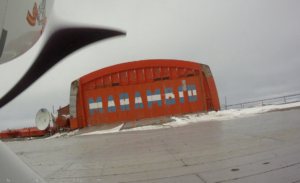

3 Comments
Mhm, exactely what I was supposing, Michel.
Outstanding, no other words necessary.
Regarding the Americans and the British: I keep it for me and tell you privately what I think. These are not the hospitality-nation I would have expected. What if an American guy would have attempted this flight??? Charles Lindberg the Second???
The pictures are really impressive, crisp, phantastic!
Blue skies, Peter
An excellent report on the pole flight Michel. It’s answered a lot of the questions that I had while watching the flight real time. A credit to your aviation skill & adventerous spirit, your support crew & Zucchelli /Maramabio antarctic station personal. Well done everyone!
All the best, Paul & Denise
Sensacional relato Michel. Ha sido como ir en la cabina contigo. Buen aviador y buen narrador.
You must be logged in to post a comment.